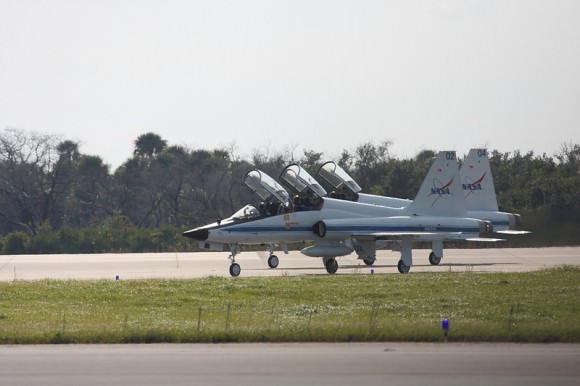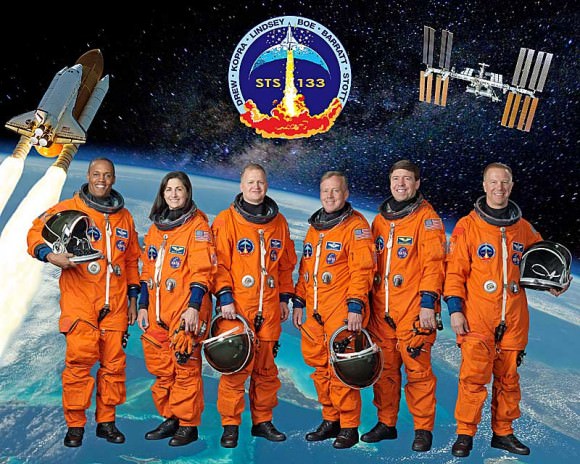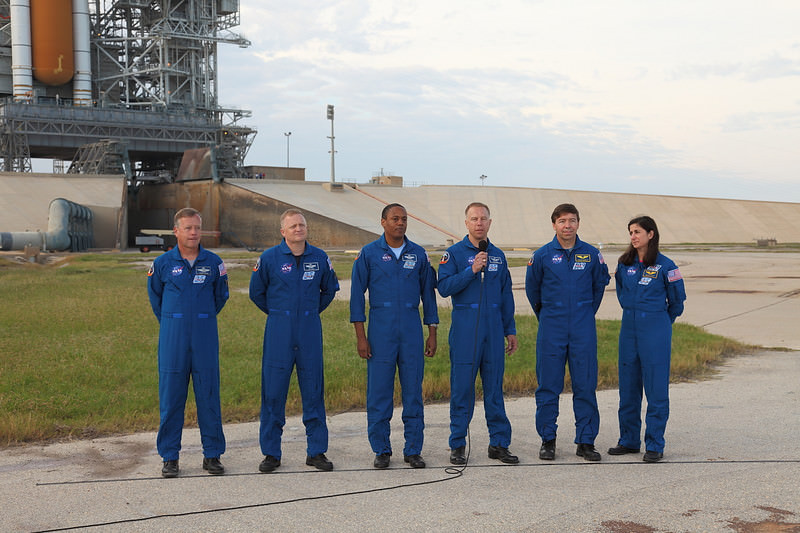[/caption]
The crew for the last mission for space shuttle Discovery spent the week at NASA’s Kennedy Space Center conducting the Terminal Countdown Demonstration Test or as it is more commonly know – TCDT. The crew arrived Tuesday, Oct. 12 and immediately set to work. This week of training is the last major milestone on the path to launch, currently scheduled to take place on Nov. 1 at 4:40 p.m. EDT.
TCDT consists of is training that simulates the final hours up until launch. This provides training for both the crew and the launch team. The launch team practices launch day timelines as well other, crucial flight-day procedures. The crew on the other hand went through a number of exercises that included:
• Rescue training – The astronauts will run through several simulations where they practice what to do in the event of an emergency. The crew will be instructed on how to use the emergency baskets that will allow them to escape the launch pad in case there is a fire. They will also learn how to operate the tank-like M113 personnel carrier and other emergency equipment.
• The commander in pilot will perform abort landings and other flight aspects in the Shuttle Training Aircraft (STA). The plane is a Grumman Gulfstream II and it duplicates the shuttle’s approach profile and many of the orbiter’s handling qualities.
• Conduct a launch day simulation that includes everything that will happen on launch day – except the launch. The crew walked out in their bright orange launch and entry suits. TCDT also includes a simulated abort so that the crew is well-versed as to what do to in case of that scenario.

These activities allow the crew and flight teams to do a rehearsal of all the events that will take place on launch day.
“This is a dress rehearsal for the real flight so the crew is kind of peaked up; they’ve put all the sequence of events together, when they go out to the pad they’ll do everything except igniting the main engines,” said Robert Springer a two-time shuttle veteran. “It’s a chance to review all your procedures and make sure everything is in place.”
The crew of STS-133 consists of Lindsey, Pilot Eric Boe and Mission Specialists, Michael Barratt, Tim Kopra, Alvin Drew and Nicole Stott. The crew is comprised entirely of space flight veterans.

STS-133 is an 11-day mission to the International Space Station (ISS) to deliver the Leonardo Permanent Multipurpose Module (PMM) which contains, among other thing, the first humanoid robot to fly into space – Robonaut-2 (R2). Also onboard is the Express Logistics Carrier-4 and spare parts for the orbiting laboratory.
Springer’s first flight was on space shuttle Discovery and as he watched the crew for her final mission his thoughts reflected on his experiences and the end of the shuttle era.
“It’s going to be a little tough, my personal experiences that I have of Discovery and my memories that I have of that time make it a little bittersweet to realize that this will be the last time that Discovery will go into space.”

